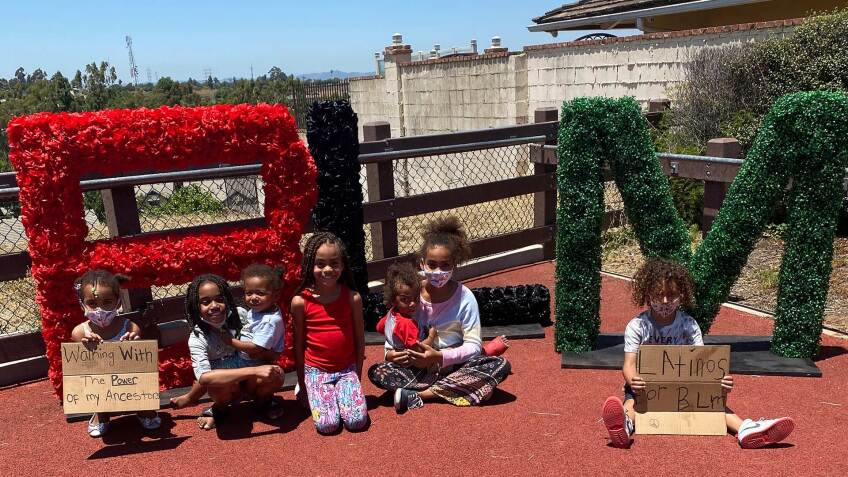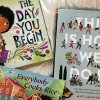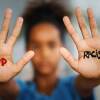How a Preschool Founder Fosters Anti-Racism
Editor's note: Charisse Sims was named a PBS KIDS Early Learning Champion in 2021. Learn more about her work.
When I was a junior in high school my teacher publicly recognized me for being the only Black student in all Advanced Placement (AP) classes. A peer responded “Oh, that’s her white side,” an ongoing joke about the traits and habits attributed to my “white side” versus my “Black side.” A few classroom chuckles ensued and we moved on without addressing the hurtful comment.
This was one of the many experiences as a biracial girl growing up in a predominantly white community that inspired me to open a preschool in a predominantly Black neighborhood. Our school has participated in school play days with schools of other cultural backgrounds so everyone can see that genius and talent has no “respect of races” (a biblical term that refers to not preferring one race over another).

We must become vigilant regarding anti-racism and we should stop sweeping racism under the rug. I originally started this piece with “If ever there was a time to put on our superhero capes, it is now,” but I realize this is not a job for superheroes. This is the work we should all be doing. Our world is facing a historic convergence of racial and social issues, and together we can build coalitions to eradicate them.
The student who made that offensive comment in my class years ago probably did so because those beliefs about race were embedded in him early on. Studies show that happens right around age 3. It has also been shown that children recognize differences in races and form “in-group” racial bias as early as 3 months old. By 3 years old, children begin to conform to societal norms.
Transductive reasoning is when a child makes a cause-and-effect connection between unrelated instances. For example, the child might say, “I didn’t take a nap today, therefore it’s not afternoon yet.” When we don’t talk to our children, they develop racial biases on their own as they look to societal norms to identify what is significant. Our societal norm is still centered around middle-class white America (to learn more about Transductive Reasoning, read “Children Are Not Colorblind: How Young Children Learn Race” by Erin N. Winkler, Ph.D.).
Representation Matters. When there is continuous representation of one race over another in children’s everyday world, they reason that the race they see the most is more significant than another. To combat that, here are some tips to empower early learners to be anti-racist:
- Diverse Books: Kids' books don’t have to be exclusively anti-racist, but they should include characters that represent different cultures.
- Diversity in Art: Art supplies should allow for painting all of the different tones and hues found in our skin colors.
- Diversity in Images: Watch movies with kids that feature historical figures and main characters of different races and try to have an equal representation of images on your walls of people and leaders from different backgrounds. One of my favorite ongoing projects with my gems (students at Hidden Gems Preschool) is to recreate historical images of great Black leaders so they can see their own faces in the making of history. These images on your walls and in your classrooms are critical because they give children a glimpse of what people can achieve in life regardless of race or cultural background.
- Affirmations: Empower early learners to say affirmations and teach them to be mindful. At my school, Hidden Gems Preschool, our gems affirm themselves and each other throughout the day by shouting, “I am strong! I am brave!” These affirmations are followed by the response: “Yes you are!” We must teach our children that they are strong enough to speak up when they see or hear something that's wrong and we should instill in them they are brave enough to face uncomfortable situations. Strength and bravery are power, but they must be clothed in the practice of mindfulness. Mindfulness teaches us the breathing work needed to use our voice and how to slow down and honor the many emotions we face in a day. With the right practices, we can learn how to sit comfortably in discomfort, learn to feel growth in being wrong and feel hope in our journey of learning and excellence.
In facilitating positive experiences for early learners, asking questions becomes one of the most daunting yet essential tasks of learning.

Here are a few self-reflection questions you should ask when setting out to empower early learners to be anti-racist:
Am I Racist?
“Racist” is defined as “a person who shows or feels discrimination or prejudice against people of other races, or who believes that a particular race is superior to another.” The conscious mind will say, “I am not racist, I love all people equally and I’m a good person,” and the subconscious mind will reinforce that, saying, “This is true and must always be true!” This is our mind’s need to preserve our self-image because we love ourselves. When life and time challenge the idea that you are a good and loving person, your mind will fight, at all costs, to protect the positive self-image it has created. This is called cognitive dissonance. Cognitive dissonance is when beliefs about self or our world are met with inconsistent and opposing ideals, especially as they relate to behavioral decisions and attitudes towards change. Once you have made the decision that you are not racist or any other negative characteristic trait, you have excused yourself from needing to learn and grow in that area. You have met the standard, so just as when you are in school when you meet a standard, you move on to the next. We, as a collective society, are not meeting the standards for racial equity and prosperity, thus, we cannot move on and grow until the standard is met. For a closer read on cognitive dissonance and race, read “The Psychology of Cognitive Dissonance and Racism” by Angela Lauer.
Be prepared and willing to be uncomfortable. There is great discomfort in finding areas of yourself that are not meeting the standards.
Am I Anti-Racist?
I’m sure that my teacher when I was in those AP classes would argue that she is not racist. But her silence in that moment — and my silence in that moment, when my peer tried to take away my Black brilliance — was not anti-racist. Her silence made the racial comment acceptable and perpetuated racist behaviors that are, again, swept under the rug.
Am I Being Honest with Myself?
I am sure that my peer who made the aforementioned comment would also argue that he is not racist. To him, the many jokes directed at me about me being biracial were simply jokes, such as: “her white side wears sandals in the rain and Uggs in the summer”; “her Black side was late this morning”; “her white side is on the swim and water polo teams”; “oh, her Black side just cleaned that chicken bone”; “her loose curls are her white side”; or even “that attitude is her Black side.” Notice which jokes are negative versus positive.
In my classmate’s mind, he was not racist. If he were to be honest with himself, he would probably find that he held onto racial biases and was promoting them. How unbelievably uncomfortable it must be to believe you are loving and find out you have ideals rooted in hate! Cognitive dissonance wants to shield you from these types of painful realizations, so you should be mindful of the rationalizations your mind makes when asking yourself some hard questions. Keep asking questions. Keep learning. Have uncomfortable conversations with people of color. Be willing to be wrong. Read stories and autobiographies. Watch “Black TV/movies” to connect with their experiences. Listen to poetry. Keep learning. So, how early should the learning begin?
At What Age Should I Start Teaching About Race and Why?
From birth! Children develop “in-group” bias (a pattern of favoring members of one's “in-group” over “out-group” members) at birth because they have not yet been exposed to faces outside of their house. So you should expose them to books with representation of other colors and cultures from day one. Studies on babies and race indicate very early racial bias but also indicate that children are not born with racial bias, but develop it very early on.
What Resources Are There to Support Me in Teaching My Little Ones About Anti-Racism?
In my experience, my greatest resources have come from my community and from connecting and sharing with one another openly, honestly and respectfully. While you continue to connect with your community, here are a few online resources to learn more about how to empower early learners to be anti-racist:
- African American Histories: Curricular Resources and Information to Build Teachers’ Background Knowledge
- The Anti-Racist Educator
- Anti-Bias Education from Teaching for Change
- The Obama Foundation
- Learning for Justice (formerly Teaching Tolerance)
- National Museum of African American History and Culture
- Common Sense Education
- Hidden Gems Preschool
- Early Childhood Anti-Bias Education Booklists from Social Justice Books and Teaching for Change
- Books to Teach White Children and Teens How to Undo Racism and White Supremacy from Charis Books & More





